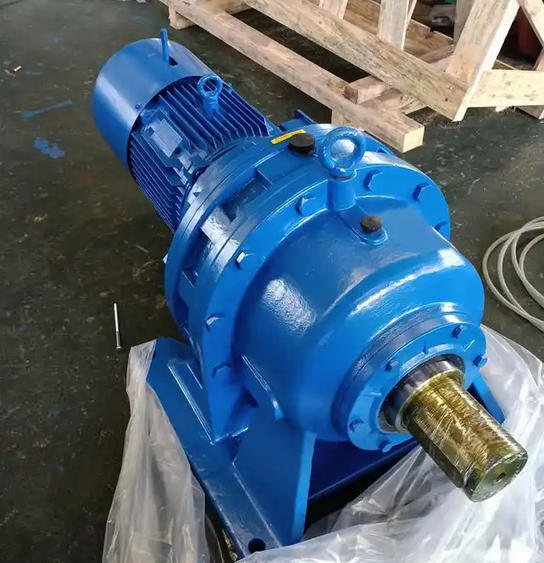How to prevent cracking of BWEY9265-595-18.5KW-4 cycloidal pinwheel reducer during stress relief tempering
The key components of the BWEY9265A-595-18.5KW-4 cycloidal pinwheel reducer, such as the output shaft, are prone to residual stresses during casting, quenching, cutting, and other processes. If these stresses are superimposed, they can cause cracks. Stress relief tempering mainly eliminates or alleviates residual stress, optimizes structural properties, and avoids cracks by regulating temperature, insulation, and cooling processes. The specific mechanism and corresponding methods are as follows:
Eliminate multi-source residual stress and avoid stress concentration and cracking
The output shaft of this model of reducer, as the core transmission component, withstands continuous torque and start stop impact under 18.5KW power. During its manufacturing process, various residual stresses are generated, such as thermal stress caused by uneven cooling during quenching and mechanical stress caused by plastic deformation during cutting. These stresses accumulate in stress concentration areas such as shaft shoulders and keyways for a long time, and will crack when the material strength limit is reached. When stress relieving tempering, the component is heated to 600-700 ℃ (suitable for carbon steel and alloy steel materials). At this temperature, the atomic diffusion ability is enhanced, the slip and climb rates of dislocations are increased, and micro plastic flow occurs inside the material, allowing residual stress to gradually relax and evenly distribute through energy release, rather than being concentrated locally, reducing stress induced cracks at the root.

Optimize internal organization and enhance crack resistance toughness
After quenching, the output shaft will form a high hardness but high brittleness martensitic structure, which is highly prone to brittle fracture under impact load. The frequent start stop impact under 18.5KW working condition will further amplify the risk of brittle fracture. During the stress relief tempering process, the martensitic structure will gradually decompose, precipitate small carbides, and some residual austenite will transform into stable ferrite and other structures. If medium high temperature stress relief tempering is used, carbides will further spheroidize, forming a stable and ductile structure. This results in a moderate decrease in the hardness of the output shaft, while significantly improving toughness and plasticity, which can better buffer the impact of working conditions and avoid cracks caused by excessive material brittleness.
Stabilize dimensions and reduce cracks caused by deformation
The output shaft of the reducer is precisely matched with components such as the needle wheel and bearings. If there is residual stress in the shaft, it will deform due to stress release during long-term operation, resulting in abnormal fit clearance and additional radial force and vibration, exacerbating local stress concentration and ultimately inducing cracks. Stress relief tempering can release stress and allow the shaft to complete deformation caused by stress in advance. At the same time, a stable organizational structure can ensure the dimensional stability of the output shaft during subsequent service, avoid additional stress caused by deformation during operation, and especially reduce the hidden danger of cracks in stress concentration areas such as shaft shoulders and keyways.

